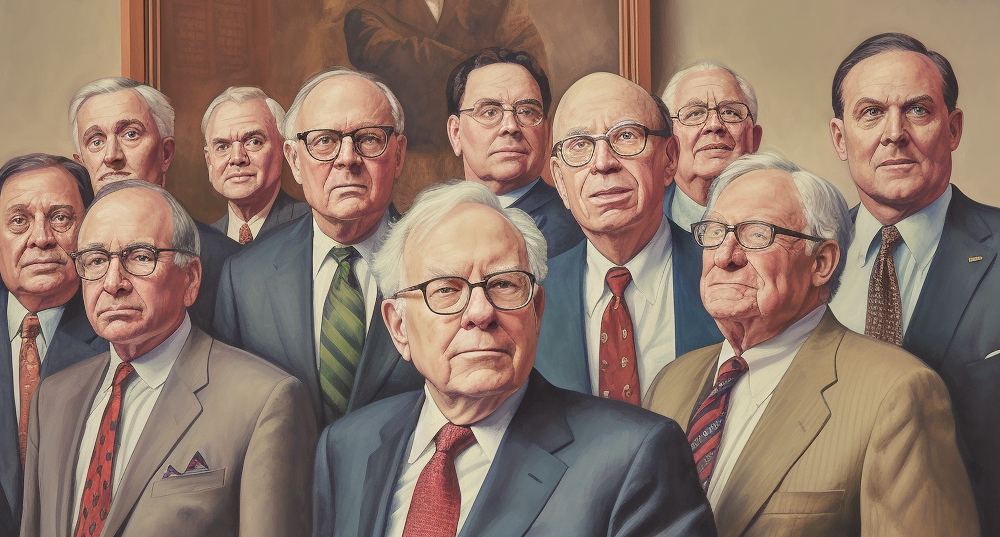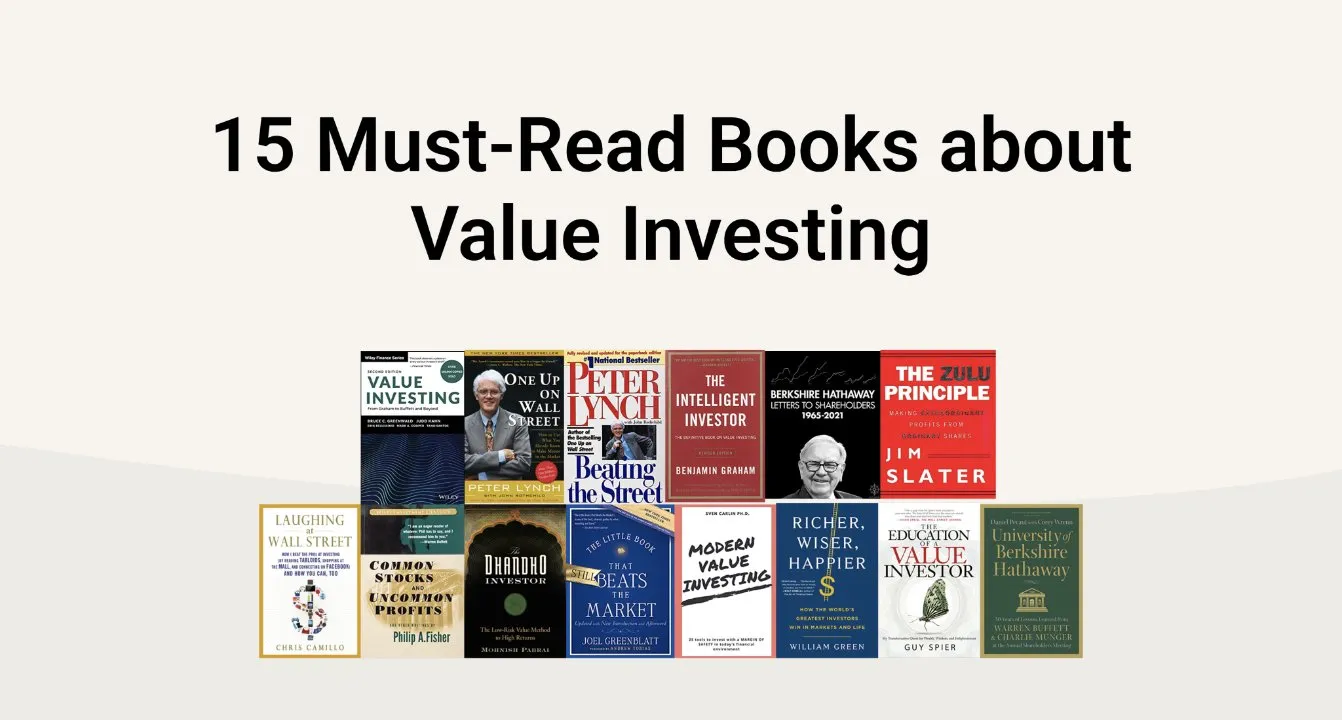
Value investing is an investment approach that focuses on identifying undervalued companies with the potential for long-term growth. Numerous successful investors have employed this strategy to achieve remarkable financial success.
We will here compare the different approches of ten renowned value investors, providing a brief overview of their criteria for selecting companies to invest in. By examining their unique perspectives, we can gain valuable insights into the world of value investing and learn from the best in the field.
Comparing famous Value Investors and their investment strategy
Warren Buffett
Warren Buffett, often referred to as the "Oracle of Omaha," emphasizes finding companies with strong economic moats. He looks for businesses with sustainable competitive advantages (Moat), such as brand recognition, high barriers to entry, and pricing power. Buffett focuses on companies that generate consistent cash flows and have a history of shareholder-friendly management.
Benjamin Graham
Benjamin Graham, the father of value investing, stressed the importance of a company's intrinsic value. He analyzed financial statements, looking for businesses trading at a significant discount to their intrinsic worth. Graham preferred companies with low price-to-earnings ratios, solid balance sheets, and consistent earnings growth.
Seth Klarman
Seth Klarman focuses on identifying companies with a margin of safety. He looks for businesses trading at a substantial discount to their intrinsic value and seeks to invest with a margin of safety to protect against potential downside risks. Klarman emphasizes thorough research and patience in waiting for opportunities.
Joel Greenblatt
Joel Greenblatt is known for his "Magic Formula" which combines high earnings yield and a high return on capital. He identifies undervalued companies with solid fundamentals and high profitability. Greenblatt looks for businesses with high returns on capital and low debt-to-equity ratios.
Charlie Munger
Charlie Munger has an investment philosophy focused on buying quality companies at bargain prices. He looks for businesses which have consistent, high returns on capital and a sound competitive advantage, such as economies of scale. Munger emphasizes patience and focus, waiting for the perfect opportunity to purchase an undervalued stock.
Mohnish Pabrai
Mohnish Pabrai looks for companies with a strong competitive position and low debt levels. He seeks to invest in businesses with predictable cash flows and favorable long-term prospects. Pabrai emphasizes the importance of buying at a substantial discount to intrinsic value and focuses on concentrated positions.
Peter Lynch
Peter Lynch is known for investing only in companies he understands and for buying when the prices are low. He looked for companies where the market significantly underestimated their potential in the short term, seeking to capitalize on miscentations in the market by purchasing stocks trading at a substantial discount to their true value.
Howard Marks
Howard Marks emphasizes a value investing approach that incorporates a deep understanding of risk. He looks for assets or companies trading at a discount to their intrinsic value due to market inefficiencies or investor sentiment. Marks seeks to capitalize on market fluctuations and invests with a long-term perspective.
Bill Miller
Bill Miller follows a value investing approach that includes a focus on a company's future growth prospects. He looks for undervalued companies with potential catalysts for growth, such as new products, industry tailwinds, or management changes. Miller aims to identify companies that the market has overlooked or undervalued.
Christopher H. Browne
Christopher H. Browne, a disciple of Benjamin Graham, sought companies with strong balance sheets, solid cash flows, and low price-to-book ratios. He focused on undervalued stocks in industries that were temporarily out of favor with investors. Browne sought long-term investments with a margin of safety.
Li Lu
Li Lu is a renowned value investor who focuses on companies with potential outcomes that far exceed the current prices of their stocks. He looks for deep value situations in which the gap between the current price of a stock and the company's intrinsic value is substantial. Unlike many other value investors, Li Lu often invests in businesses in volatile markets.
Sir John Templeton
Sir John Templeton focused on buying companies when no one else wants them. He looked for undervalued stocks with significant potential for appreciation. Templeton would purchase stocks when they were trading at deep discounts to their intrinsic values, positioning himself to realize significant returns when the market perceived the intrinsic value of the stock.
James O'Shaughnessy
James O'Shaughnessy is a quant investor, focusing on businesses with strong fundamentals and handsome returns. He utilizes public data such as book values and earnings growth rates to compare stocks, emphasizing value investing in a systematic approach. He looks for companies with strong fundamentals and future earnings growth.
Walter Schloss
Walter Schloss favored a straightforward approach to value investing. He searched for stocks trading at significant discounts to their book value, seeking companies with strong financial positions, low debt levels, and stable earnings. Schloss had a long-term investment horizon and preferred a diversified portfolio.
Francis Chou
Francis Chou sought to invest in undervalued companies with strong balance sheets, consistent cash flows, and a history of profitability. He focused on businesses trading at discounts to their intrinsic value due to temporary setbacks or market pessimism. Chou concentrated on long-term value creation.
What are the common criterias for those investors ?
While each value investor has their own unique approach, there are some common criteria that many of them consider when selecting companies to invest in:
- Margin of Safety: Value investors seek companies that are trading at a significant discount to their intrinsic value. They aim to buy stocks with a margin of safety to protect against potential downside risks. The concept of margin of safety is one of the most important for value investors.
- Strong Financial Position: Most value investors look for companies with solid balance sheets, low debt levels, and consistent cash flows. They prefer businesses that can weather economic downturns and have the ability to generate sustainable profits.
- Competitive Advantage: Value investors often focus on companies with a sustainable competitive advantage or economic moat. They seek businesses with strong brand recognition, high barriers to entry, unique technology, or pricing power that allow them to maintain market dominance.
- Long-Term Growth Potential: While value investors primarily focus on undervalued stocks, they also consider the long-term growth prospects of the companies they invest in. They seek businesses that have the potential to grow earnings and expand their market share over time.
Main differences between Value Investors
Despite the commonalities, there are notable differences among the criteria used by different value investors:
- Quantitative vs. Qualitative Factors: Some value investors, like Joel Greenblatt with his Magic Formula, rely heavily on quantitative metrics such as earnings yield and return on capital. Others, like Warren Buffett and Seth Klarman, consider both quantitative and qualitative factors, such as competitive advantages and management quality.
- Concentration vs. Diversification: Some value investors, such as Mohnish Pabrai, prefer concentrated portfolios with a few high-conviction picks. Others, like Walter Schloss, opt for a more diversified approach with a larger number of undervalued stocks in their portfolio.
- Catalysts for Growth: While all value investors seek undervalued stocks, some, like Bill Miller, specifically look for companies with potential catalysts for growth. They focus on factors such as new products, industry tailwinds, or management changes that could unlock value and drive the stock price higher.
- Risk Consideration: Howard Marks emphasizes a deep understanding of risk and seeks to capitalize on market inefficiencies. He looks for assets or companies that are undervalued due to market sentiment or temporary factors. Other investors, such as Benjamin Graham and Christopher H. Browne, focus on companies with low price-to-book ratios, which inherently offer a margin of safety.
- Investment Time Horizon: The time horizon for value investing can vary among investors. Some, like Benjamin Graham and Walter Schloss, have a long-term investment horizon of several years or more. Others, like Peter Lynch and Howard Marks, are comfortable holding investments for shorter periods of time.
Beanvest will help you keep track of your investments portfolios and have a better understanding of your performance.
Start with our 100% free portfolio tracker today:


